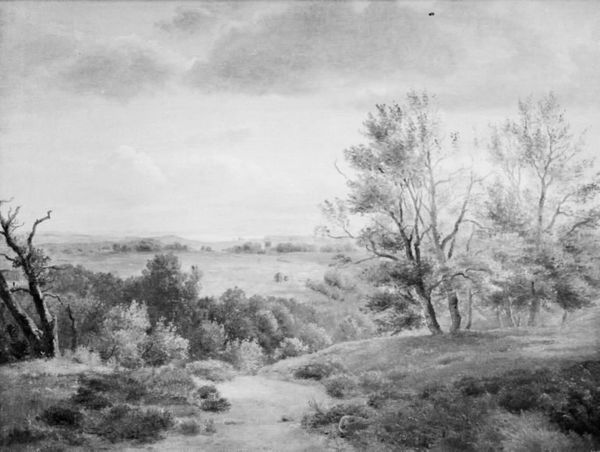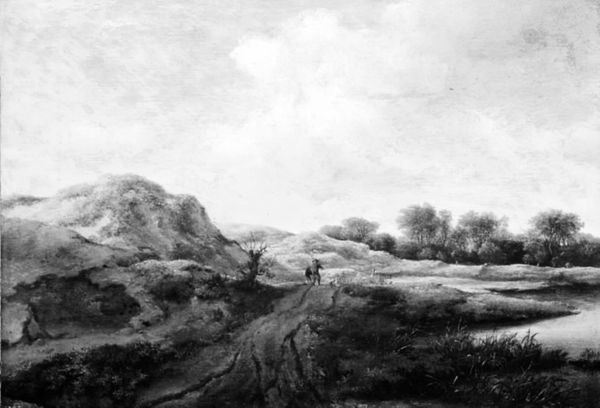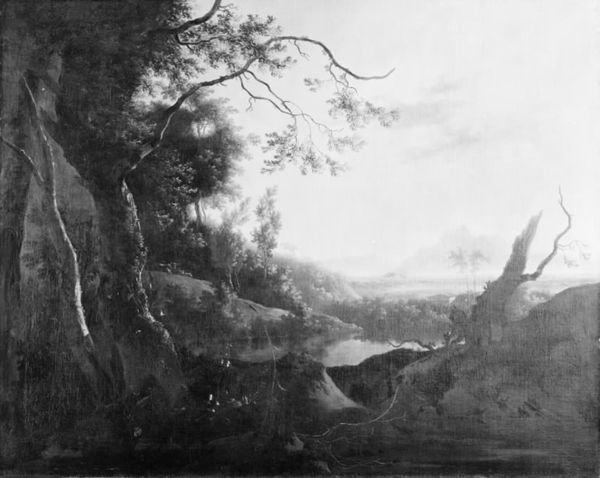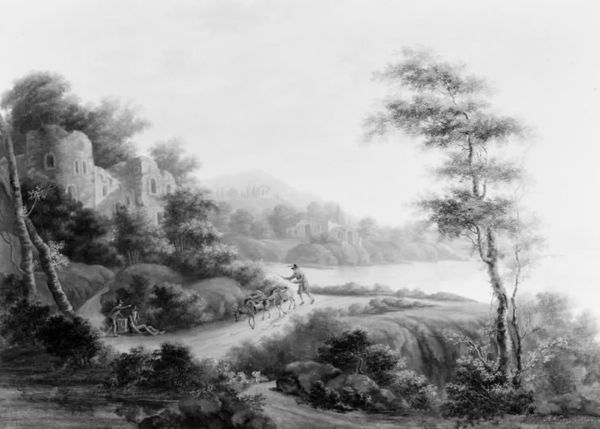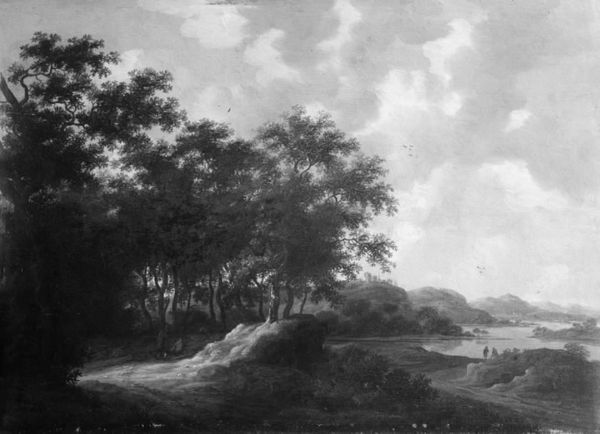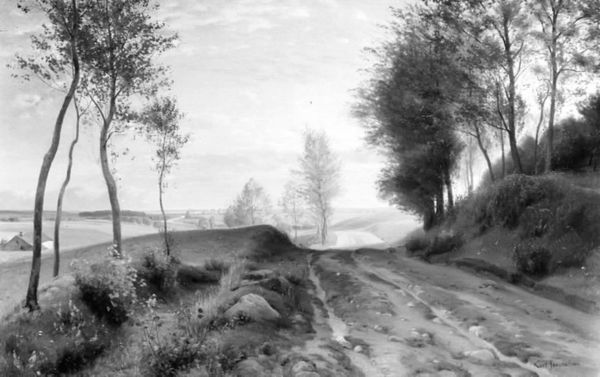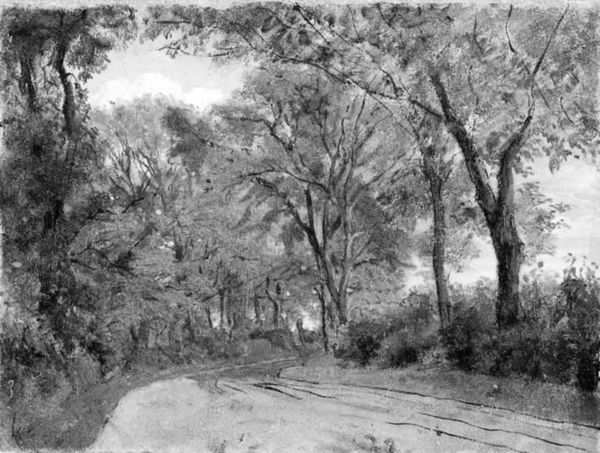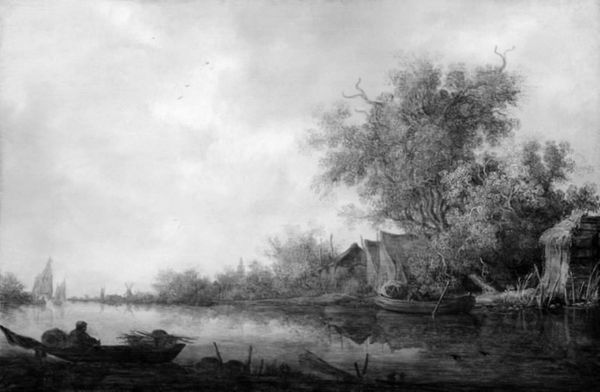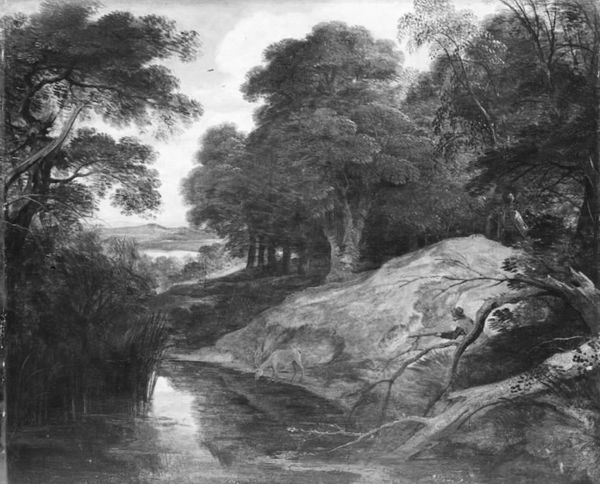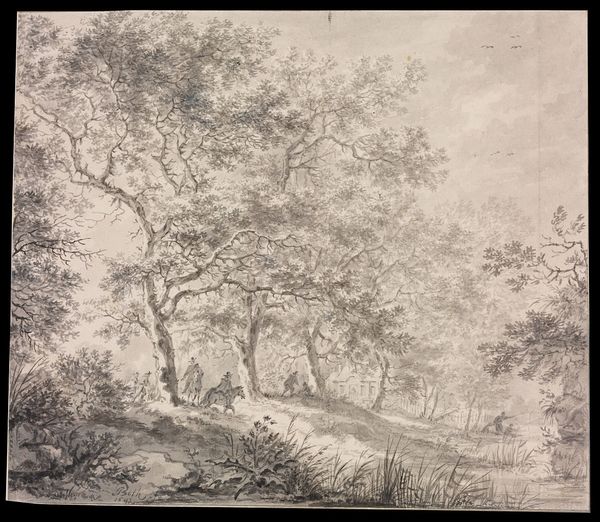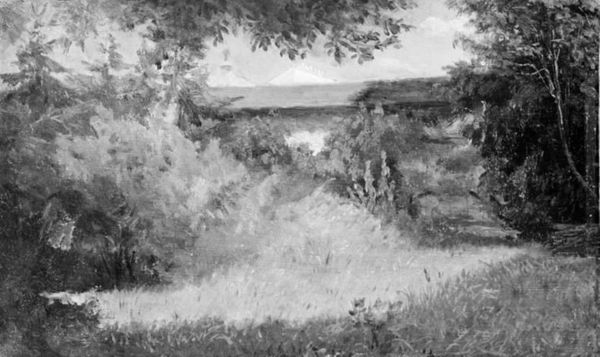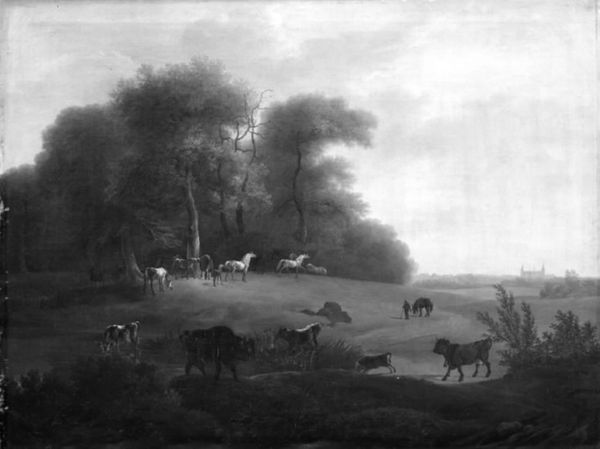
painting, wood
#
dutch-golden-age
#
painting
#
countryside
#
landscape
#
black and white
#
monochrome photography
#
wood
#
genre-painting
#
monochrome
#
realism
#
monochrome
Dimensions: 39 cm (height) x 60.5 cm (width) (Netto)
Curator: Looking at "Road near Village" from 1646, created by Guillaum Du Bois, immediately evokes a somber mood. The monochromatic palette certainly emphasizes a quiet melancholy. What do you notice first? Editor: Well, formally speaking, I’m drawn to the artist’s handling of light and shadow to create depth. The road, with its curves, is an astute tool for leading the eye, even in grayscale. Curator: It's worth considering this use of light within its historical moment. Paintings like these documented land use and asserted claims to the Dutch countryside. Consider this genre scene alongside concurrent expansion and reclamation projects. Editor: I see your point about the societal context, but the monochrome application appears deliberate. The interplay of tone emphasizes the compositional architecture, doesn’t it? The steeple in the background echoes forms of trees that surround the figures along the pathway. Curator: Indeed, and that path is no accident. This genre painting invites you to read Dutch society through its well-trodden roadways. Wood panels would have been common and relatively affordable, an accessible medium that expanded production beyond elite circles. How does this accessibility play into our understanding? Editor: Intriguing. So, in essence, we consider it not simply as aesthetic exploration but through who could access, afford, or even depict such scenes. I appreciate your insistence that we think beyond mere pictorial space and analyze the physical and economic dimensions behind its making. Curator: Exactly. The monochrome effect might speak to constraints in material access too. This opens up interpretation, moving us from a singular focus on artistic expression to analyzing conditions. Editor: Fair enough. Analyzing the production conditions adds complexity. I concede it broadens beyond a purely optical read. Curator: It shifts emphasis—illuminating class, labor and access to resources, thereby connecting stylistic choices to material realities. Editor: An insightful reframing; I hadn’t considered it that way before. Thanks for guiding us through that exploration!
Comments
No comments
Be the first to comment and join the conversation on the ultimate creative platform.
